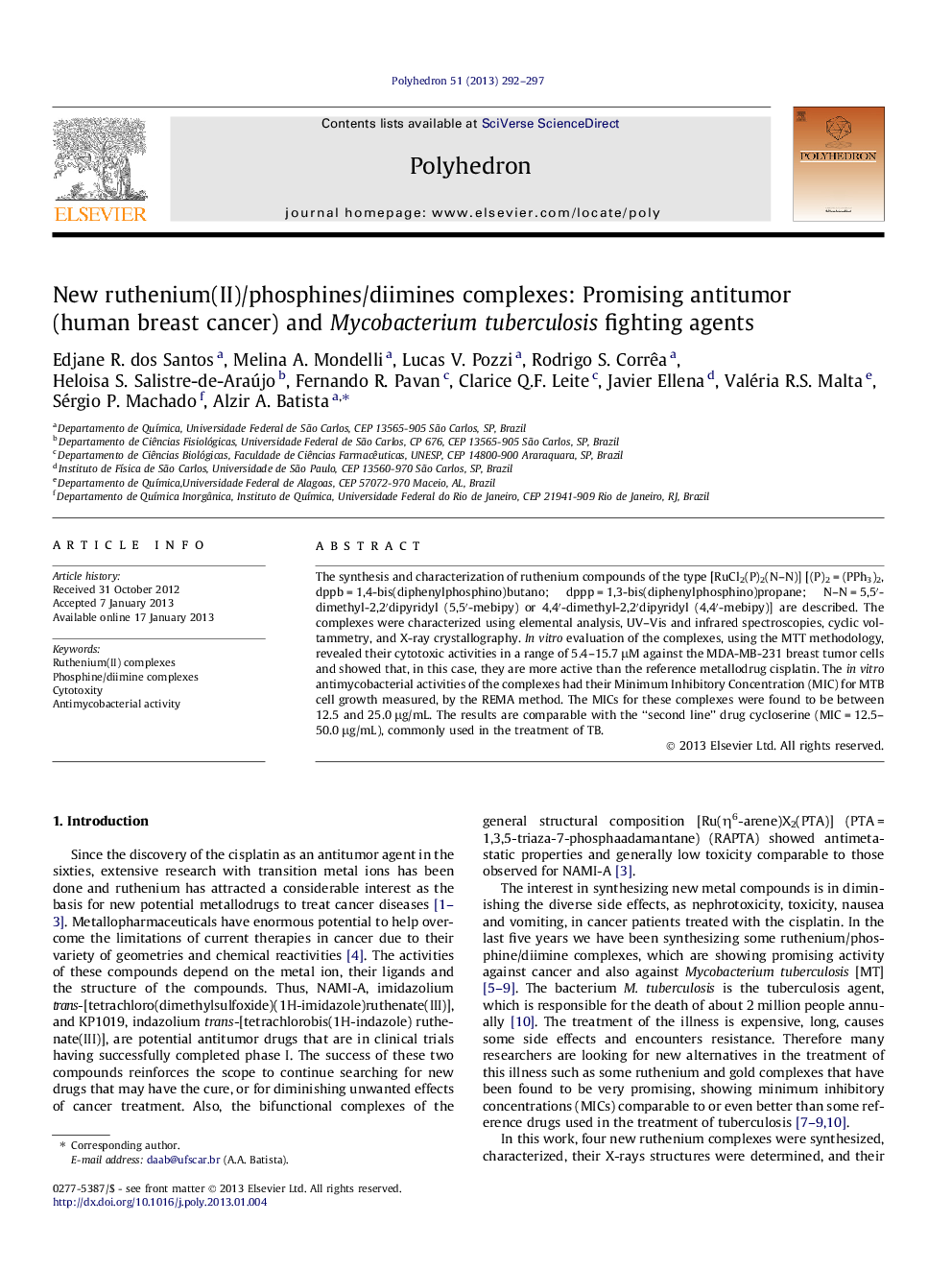| Article ID | Journal | Published Year | Pages | File Type |
|---|---|---|---|---|
| 1337176 | Polyhedron | 2013 | 6 Pages |
The synthesis and characterization of ruthenium compounds of the type [RuCl2(P)2(N–N)] [(P)2 = (PPh3)2, dppb = 1,4-bis(diphenylphosphino)butano; dppp = 1,3-bis(diphenylphosphino)propane; N–N = 5,5′-dimethyl-2,2′dipyridyl (5,5′-mebipy) or 4,4′-dimethyl-2,2′dipyridyl (4,4′-mebipy)] are described. The complexes were characterized using elemental analysis, UV–Vis and infrared spectroscopies, cyclic voltammetry, and X-ray crystallography. In vitro evaluation of the complexes, using the MTT methodology, revealed their cytotoxic activities in a range of 5.4–15.7 μM against the MDA-MB-231 breast tumor cells and showed that, in this case, they are more active than the reference metallodrug cisplatin. The in vitro antimycobacterial activities of the complexes had their Minimum Inhibitory Concentration (MIC) for MTB cell growth measured, by the REMA method. The MICs for these complexes were found to be between 12.5 and 25.0 μg/mL. The results are comparable with the “second line” drug cycloserine (MIC = 12.5–50.0 μg/mL), commonly used in the treatment of TB.
Graphical abstractNew ruthenium(II)/phosphine/diimines complexes with general formula cis-[RuCl2(PP)(N–N)] with promising antitumour (human breast cancer) and Mycobacterium tuberculosis fighting agents were synthesized and characterized. The structure of the complexes were determined by X-ray diffraction.Figure optionsDownload full-size imageDownload as PowerPoint slideHighlights► New ruthenium (II)/phosphines/diimines complexes were synthesized and fully characterized. ► The new complexes are very promising antitumor (human breast cancer) and Mycobacterium tuberculosis fighting agents. ► The MIC values for the complexes are comparable to cycloserine, a “second line” drug against Mycobacterium tuberculosis.
